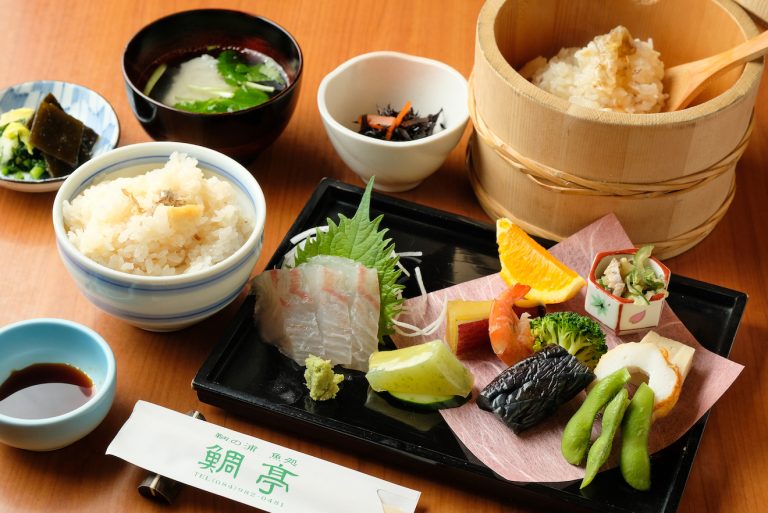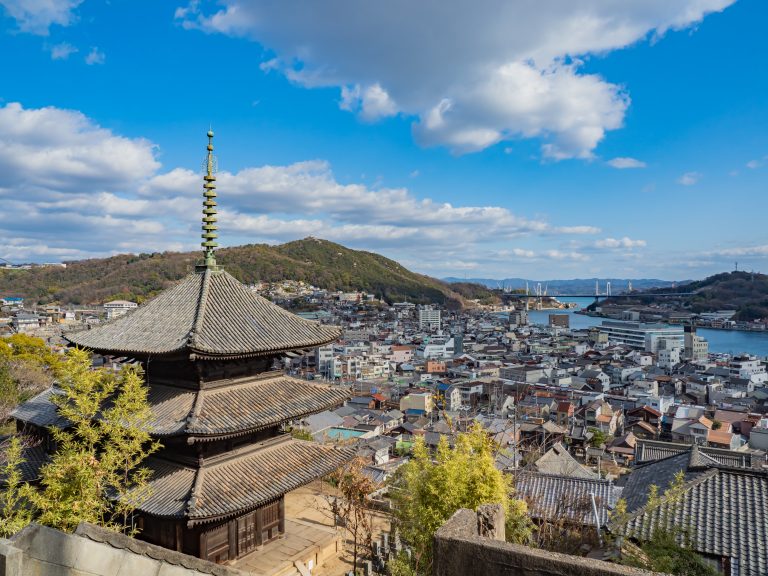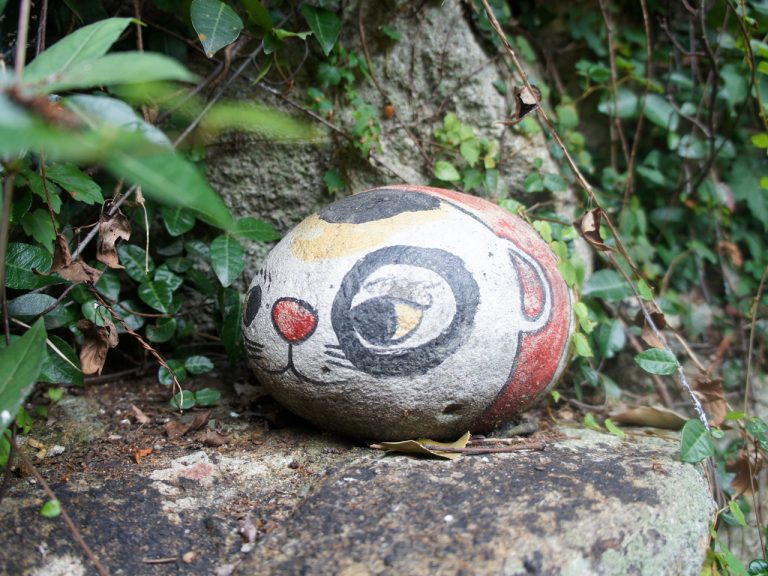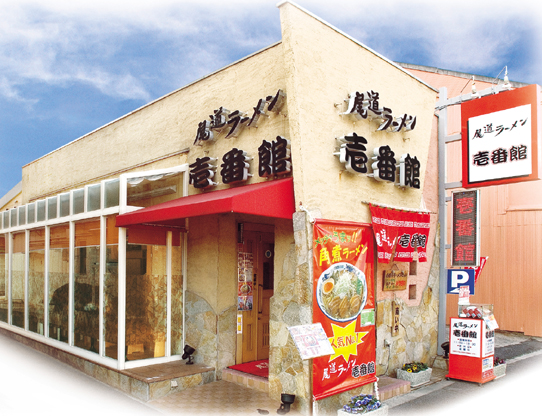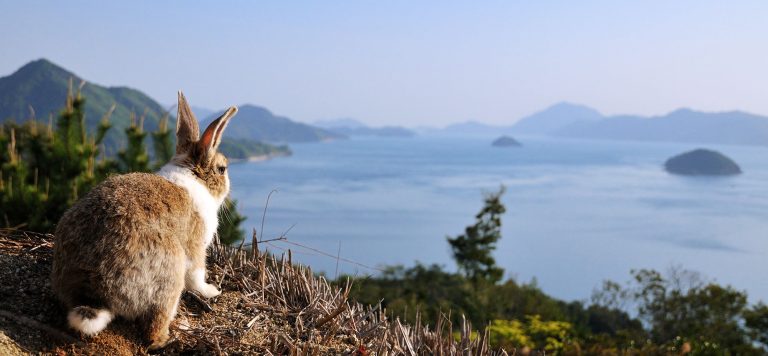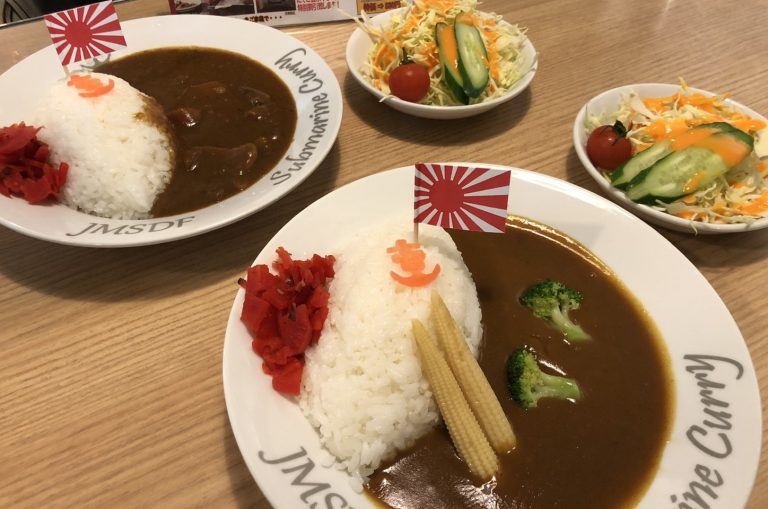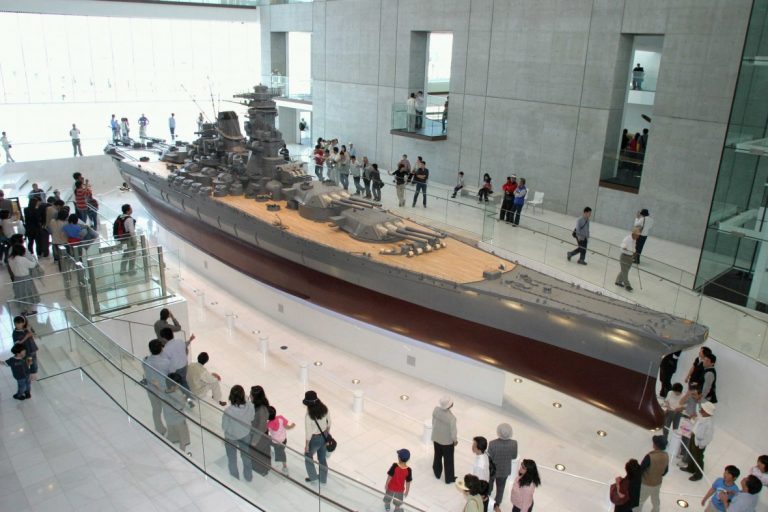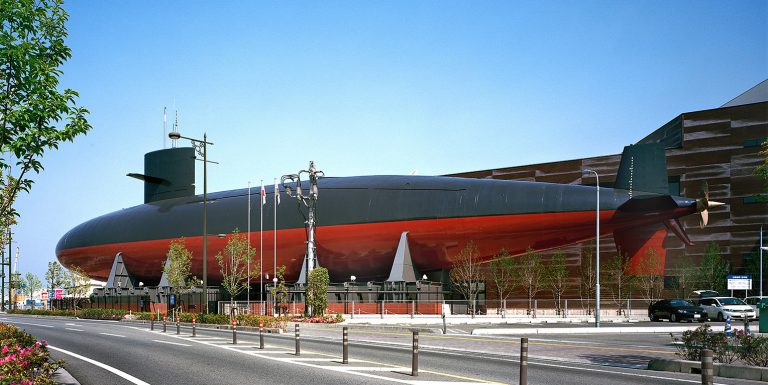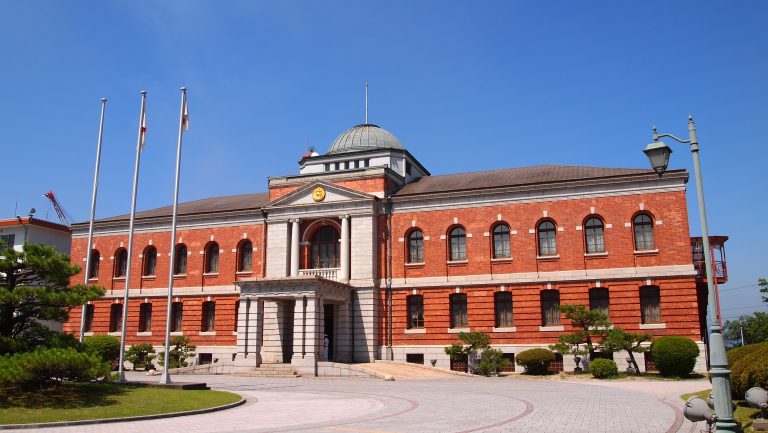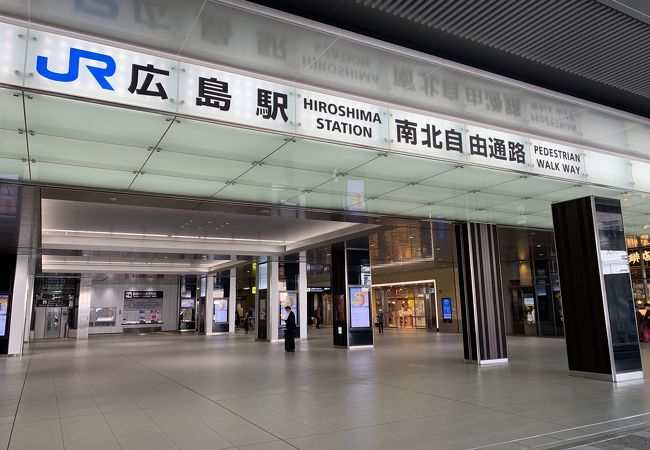Itineraries 2day
Hiroshima Seto Inland Sea Tour – Full
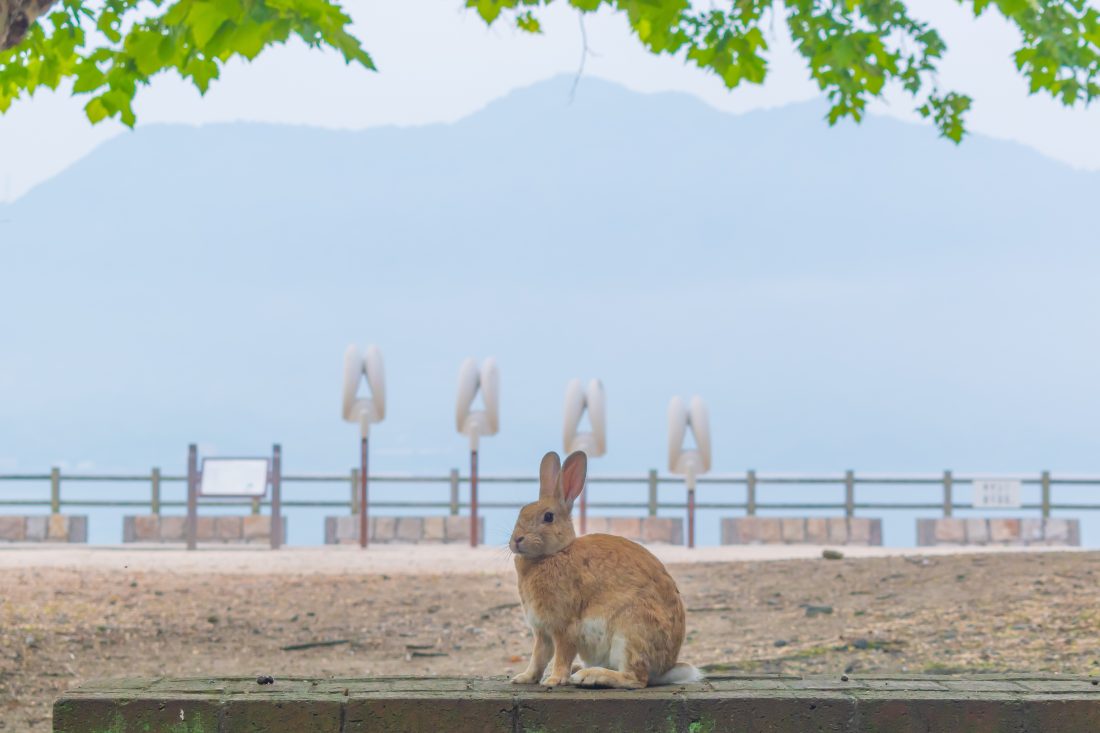
Starting from Fukuyama, the eastern gateway to Hiroshima Prefecture, take two days to travel along the Seto Inland Sea to Hiroshima City while enjoying the cool sea breeze.
Day 1
01 Fukuyama Station (福山駅)
Fukuyama Station is a stop on the Sanyo Shinkansen, although not all Shinkansen trains stop there. The platforms may be humble, but the area around the station is bustling with life, just like its counterpart in Hiroshima City. Countless shops and eateries can be found in the adjacent buildings, and the numerous bus platforms just outside can whisk travelers away to destinations like Tomonoura, Shinshoji, Miroku no Sato, or Abuto Kannon-ji.
- Address
- 30-1 Sannomaru-cho, Fukuyama, Hiroshima Prefecture, JAPAN
Transportation: Tomonoura [Tomotetsu Bus, ~50 minutes]
02 Tomonoura (鞆の浦)
Tomonoura is a port town located along the coast of Fukuyama City. The city is also home to the Tomonoura Museum, which is one of the most popular tourist attractions in Japan. Tomonoura is often used as a stage for movies and anime, and has appeared in such masterpieces as Marvel’s “The Wolverine” and Ghibli’s “Ponyo.”
- Address
- 416-1 Tomo, Tomo-cho, Fukuyama, Hiroshima Prefecture, JAPAN
03 Tai Tei (鯛亭)
Tai Tei is a Japanese restaurant located in the Tomonoura area of Fukuyama City. As the name “Tai Tei” implies (Tai being the Japanese word for red snapper), Japanese dishes such as tai-meshi (rice with red snapper) and tai-zukuri (red snapper sashimi), both of which use the famous Tomonoura red snapper, are popular as specialty dishes. The restaurant also offers a wide selection of alcoholic beverages that go well with the light flavor of the Japanese dishes, and at dinner time the restaurant has a lively atmosphere full of the local regulars as well as tourists visiting the Tomonoura area.
- Address
- 550-4 Tomo-cho Tomo, Fukuyama, Hiroshima Prefecture, JAPAN
Transportation: JR Onomichi Station [Tomotetsu Bus & JR Sanyo Line, ~75 minutes]
04 Senkoji (千光寺)
Senkoji Temple is one of the most popular tourist attractions in Onomichi. The temple is located halfway up Mt. Taiho and is said to have been built about 1,200 years ago. The vermilion-lacquered main hall, also known as the “red hall,” is said to be unique in its beauty and has been preserved in many postcards and photographs since ancient times. The Senkoji ropeway, which departs from the foot of the mountain, is a convenient way to get to Senkoji. It takes about three minutes to reach the mountainside where Senkoji Temple is located.
- Address
- 15-1 Higashitsuchido-cho, Onomichi, Hiroshima Prefecture, JAPAN
05 Cat Alley (猫の細道)
Cat Alley (Neko no Hosomichi) is a narrow alleyway that stretches about 200 meters from the Ushitora Shrine to the three-story pagoda of Tenneji Temple in Onomichi. It is a tourist attraction nicknamed “Neko no Hosomichi” (the narrow path of cats) as the number of Fukuseki Neko, the works of author Shunji Sonoyama, started to increase in this alley. As the number of these cats increased, the area was nicknamed “Neko no Hosomichi (Cat Alley).”
This is located in a residential area,
so we encourage that you visit
during the daytime.
- Address
- 19-26, Higashitsuchido-cho, Onomichi, Hiroshima Prefecture, JAPAN
06 Ichibankan (壱番館)
Ichibankan is a ramen restaurant located about a 10-minute walk from Onomichi Station. The ramen served in Onomichi is called “Onomichi Ramen,” and is characterized by a light chicken-based soup with a rich flavor and a lot of back oil. Ichibankan is one of the most popular Onomichi ramen restaurants, offering ramen with plenty of green onions and a clear, special broth.
- Address
- 2-9-26 Tsuchido, Onomichi, Hiroshima Prefecture, JAPAN
Transportation: Okunoshima Pier [JR Sanyo & Kure Lines & Omishima Ferry, ~50 minutes]
07 Ōkunoshima (大久野島)
Okunojima is an uninhabited island located about 15 minutes by ferry from Omishima Island, one of the islands on the Shimanami Kaido, and from Tadanoumi Port, a short distance from JR Tadanoumi Station. Okunojima has long been famous as the “Rabbit Island,” with about 900 wild rabbits living on the island. Okunojima is also known as the island where the former Japanese Army secretly conducted poison gas experiments during World War II, and the island is dotted with facilities such as the Poison Gas Museum.
- Address
- Okunoshima, Tadanoumi-cho, Takehara, Hiroshima Prefecture, JAPAN
Lodging: Kyukamura Okunoshima
Day 2
01 Kyukamura Okunoshima (休暇村大久野島)
Kyukamura Okunoshima is a well-renowned island resort on Okunoshima that attracts tourists from all over Japan. Here, visitors can stay the night and see the native rabbit population during hours day trippers cannot. In addition, Kyukamura Okunoshima offers hot springs, luxurious dining options, a bicycle rental service, camp sites, a private beach and outdoor pool (open in the summer), as well as tennis courts for a complete vacation experience. Even those who do not overnight on Okunoshima can make use of the restaurant and bathing facilities in between rabbit-watching and circumnavigating the island.
- Address
- 5476-4 Tadanoumi-cho, Takehara, Hiroshima Prefecture, JAPAN
Transportation: Takehara Station [Omishima Ferry & JR Kure Line, ~45 minutes]
02 Takehara Preserved Historic District (たけはら町並み保存地区)
Known as “Aki’s Little Kyoto,” the Takehara Preserved Historic District is a tourist spot where you can see the old streets of Takehara City, which has prospered since ancient times. Lined with old houses and warehouses that are over several hundred years old the area has been selected as a national important traditional building preservation district. Once you step into the district, you will feel as if you have taken a step back in time to traditional Japan.
- Address
- 3-11-7 Honmachi, Takehara, Hiroshima Prefecture, JAPAN
Transportation: Kure Station [JR Kure Line, ~1 hour]
03 Kure High Collar Mess Hall (呉ハイカラ食堂)
The Kure High Collar Mess Hall is a café-restaurant located about a three-minute walk from Kure Station. The restaurant is reminiscent of the inside of a submarine and offers a variety of dishes such as Kure’s famous “Maritime Curry.” The Kure High Collar Mess Hall serves the same curry served on the Sōryū-class submarines, which was originally a Friday dinner for submarine crews.
- Address
- 4-21 Takaracho, Kure, Hiroshima Prefecture, JAPAN
04 Yamato Museum, a.k.a. Kure Maritime Museum (大和ミュージアム、又の名を呉市海事歴史科学館)
Kure City was once the location of the largest naval arsenal in Japan. During World War II, the city built the great Battleship Yamato, which was one of the world’s largest battleships at the time. After the war, the city built many of the world’s largest trading tankers, and today Kure continues to flourish as a shipbuilding town. The Yamato Museum, located a five-minute walk from Kure Station, is a museum that introduces the modern history of Kure’s use as a military port and Kure’s world-class shipbuilding and their application of science and technology over the ages. The museum has valuable artifacts such as a full-size Type 62 Zero fighter plane and an exhibition room that explains shipbuilding and other scientific advancements in a step-by-step manner that is easy to understand for everyone.
(Exhibition Admission Fee)
General (University students
and above) – ¥500
High School students – ¥300
Elementary/Junior High School
students – ¥200
Preschoolers – Free
※ If you are a student, please
present your passport or
school ID at reception when
purchasing your ticket.
- Address
- 5-20 Takara-cho, Kure, Hiroshima Prefecture, JAPAN
05 Japan Maritime Self-Defense Force Kure Museum, a.k.a. Iron Whale Museum (海上自衛隊呉史料館、又の名をてつのくじら館)
The Japan Maritime Self-Defense Force Kure Museum (also known as the Iron Whale Museum) is the only museum in Japan that displays an actual full-size submarine above water. The museum has documents on the Maritime Self-Defense Force’s history, which still has its main base in Kure. The museum also has information on the functions of the underwater minesweeping taskforce, whose mission is to find and dispose of mines and other hazardous materials. There is also information on the history and technologies used in submarines and daily activities on board the vessels.
Free admission
- Address
- 5-32 Takaracho, Kure, Hiroshima Prefecture, JAPAN
06 Kure Naval District (呉鎮守府)
The Kure Naval District was one of four–alongside Yokosuka, Sasebo, and Maizuru–primary administrative districts of the Imperial Japanese Navy that was established in the Meiji Era. Although the Imperial Japanese Navy has since been replaced by the Japan Maritime Self-Defense Force, that history remains in Kure Port in the form of shipbuilding yards, museums, and oceangoing vessels still moored out in the harbor. Visitors can take a cruise around Kure Harbor or taste a slice of a sailor’s life at one of various restaurants selling Kure’s famous “navy curry.”
- Address
- 8-1 Saiwai-cho, Kure, Hiroshima Prefecture, JAPAN
Transportation: Hiroshima Station [JR Sanyo Line, ~105 minutes]
07 Hiroshima Station (広島駅)
Hiroshima Station is the bustling transportation hub of our peaceful city, and one of the principal entertainment hubs as well. All JR lines in the city stop here, and from here, people can take numerous buses and streetcars anywhere in the city, or even out of town. The ekie shopping complex located inside the station building also has no shortage of restaurants and souvenir shops to keep visitors busy for hours.
- Address
- 2-37 Matsubaracho, Minami Ward, Hiroshima City, Hiroshima Prefecture, JAPAN
08 ekie (エキエ)
ekie (stylized with lowercase letters only) is a relatively new shopping center attached to the northern and eastern ends of Hiroshima Station. It’s actually broken down into several sections, but on the whole, it’s a bookstore, a convenience store, a food court, a nightlife destination, a souvenir store, and a supermarket at the same time! Grab a bite to eat here right after stepping off the Shinkansen, or buy a last-minute present for someone special right before catching your train!
- Address
- 1-2 Matsubara-cho, Minami Ward, Hiroshima City, Hiroshima Prefecture, JAPAN
Grab dinner at ekie before heading back to your accommodation to prep for your next adventure.
Fukuyama Station (福山駅)
30-1 Sannomaru-cho, Fukuyama, Hiroshima Prefecture, JAPAN
Tomonoura (鞆の浦)
416-1 Tomo, Tomo-cho, Fukuyama, Hiroshima Prefecture, JAPAN
Tai Tei (鯛亭)
550-4 Tomo-cho Tomo, Fukuyama, Hiroshima Prefecture, JAPAN
Senkoji (千光寺)
15-1 Higashitsuchido-cho, Onomichi, Hiroshima Prefecture, JAPAN
Cat Alley (猫の細道)
19-26, Higashitsuchido-cho, Onomichi, Hiroshima Prefecture, JAPAN
Ichibankan (壱番館)
2-9-26 Tsuchido, Onomichi, Hiroshima Prefecture, JAPAN
Ōkunoshima (大久野島)
Okunoshima, Tadanoumi-cho, Takehara, Hiroshima Prefecture, JAPAN
Kyukamura Okunoshima (休暇村大久野島)
5476-4 Tadanoumi-cho, Takehara, Hiroshima Prefecture, JAPAN
Takehara Preserved Historic District (たけはら町並み保存地区)
3-11-7 Honmachi, Takehara, Hiroshima Prefecture, JAPAN
Kure High Collar Mess Hall (呉ハイカラ食堂)
4-21 Takaracho, Kure, Hiroshima Prefecture, JAPAN
Yamato Museum, a.k.a. Kure Maritime Museum (大和ミュージアム、又の名を呉市海事歴史科学館)
5-20 Takara-cho, Kure, Hiroshima Prefecture, JAPAN
Japan Maritime Self-Defense Force Kure Museum, a.k.a. Iron Whale Museum (海上自衛隊呉史料館、又の名をてつのくじら館)
5-32 Takaracho, Kure, Hiroshima Prefecture, JAPAN
Kure Naval District (呉鎮守府)
8-1 Saiwai-cho, Kure, Hiroshima Prefecture, JAPAN
Hiroshima Station (広島駅)
2-37 Matsubaracho, Minami Ward, Hiroshima City, Hiroshima Prefecture, JAPAN
ekie (エキエ)
1-2 Matsubara-cho, Minami Ward, Hiroshima City, Hiroshima Prefecture, JAPAN



